New Student Organization Forges Connections with Nature
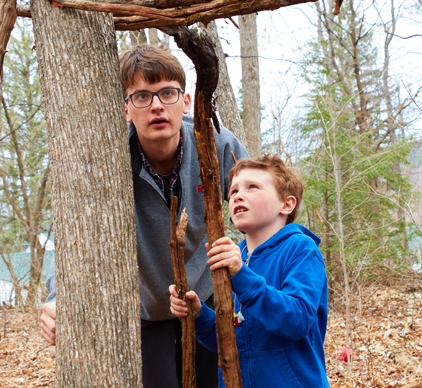
MIDDLEBURY, Vt. – Every meeting of the student organization WildMidd opens with “nature notes,” as each attendee shares a recent observation of the natural world: woodcocks mating near Otter Creek; a squished porcupine on the side of the road; a squirrel on a Dumpster; eerie sounds of ice melting across Lake Dunmore; a cardinal; the full moon seen while crossing campus at night; a skunk waddling through a nearby field.
It’s a deliberately fun and inclusive way to start the meeting, and it offers a powerful testament to the wild around us.
“Exploring place-based environmentalism is largely the reason this club was founded,” said member and key organizer Myles Stokowski ’21. “Nature notes is a way to celebrate the regular things that you see right around here—like this pair of merlins that have been flying around campus. I’ll see them between classes, and I think that’s pretty cool.”
Launched in September 2018, the Wild Middlebury Project (the club’s formal name) brings together hands-on environmental stewardship, outreach with kids K–12, engagement with local organizations, collaboration with peers on campus, citizen science, environmental advocacy, and leadership building—all focused on local places and ecosystems.
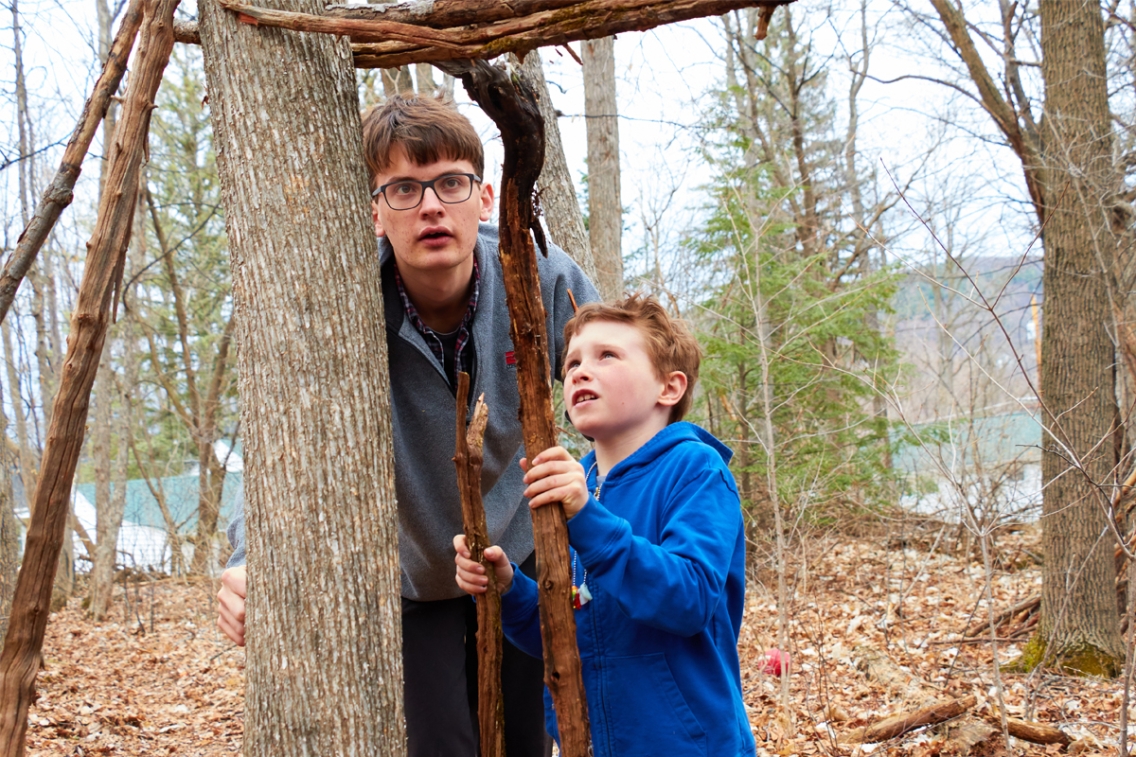
Oscar Psychas ’21, one of the cofounders of WildMidd, works with a young friend on building a shelter in the woods during a recent event teaching area kids outdoor skills.
The idea began with a conversation between two friends hanging out along a river on a hot summer day, asking, “How do you foster young people as environmental leaders?” “How do you inspire the next generation to really care about the places that they come from?” “How do we get communities to connect with local spaces and find what is wild in their own lives?”
Sophomores Jacob Freedman and Oscar Psychas met as first-years at Ultimate Frisbee practice. Both are majoring in geography and environmental studies. Both have backgrounds doing environmental education and working with local land trusts. Both feel keenly the planetary crisis that defines our present moment. Last April, Psychas joined seven other young Floridians in filing a lawsuit against Florida’s state leaders for failing to address climate change.
Like many in his generation, Freedman recounts watching An Inconvenient Truth as a child and being gripped by “these existential gut wrenching feelings like ‘The climate’s going to end’ and ‘Why am I even alive?’” He was seven.
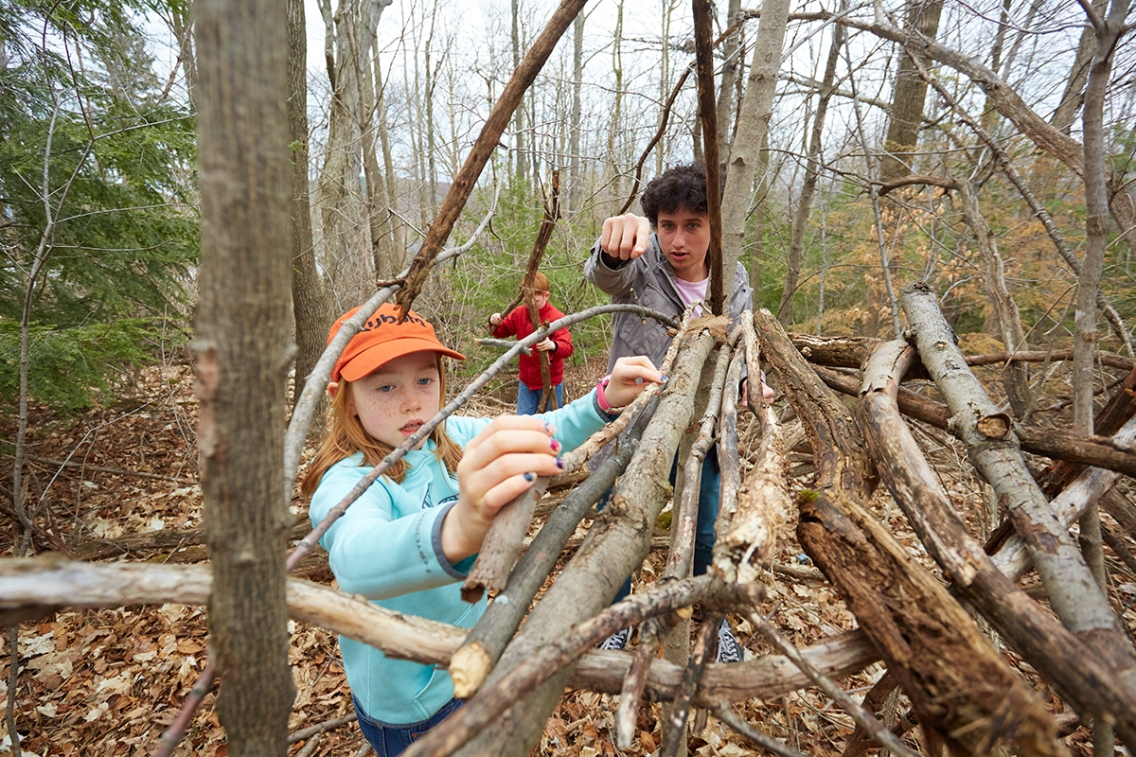
Basil Alfaro ’22 offers some guidance to his young friend during an activity on building shelters that College students directed in the woods behind Atwater Hall.
“In college, we often think about the really big-picture issues—like climate change—but feel disconnected to the local environment,” said Psychas. “We often don’t foster a sense of connected conservation for young people where they can actually take action in the places they live, have meaningful experiences getting outside, and find their own voices as environmental advocates.”
Continued Psychas: “As passionate as I am about transitioning to renewable energy, we also need to find and reconnect our relationship with earth, and that starts with where we live. Connecting people to nature where they live is both a way of creating lifelong environmental stewards and an end in itself. We’re hardwired to spend time in nature and spend time in nature together.”
Last fall, in its first several weeks as a new student organization, the group brainstormed projects and started building a network of community partners such as the Middlebury Area Land Trust (MALT), Otter Creek Audubon Society, Montpelier’s North Branch Nature Center, and the Vermont Center for Ecostudies (VCE). They met with local schools, including Bridge School and Mary Hogan Elementary, as well as the Hannaford Career Center (HCC).
They began visiting sites, making plans, and taking action: banding birds at the Dead Creek Wildlife Management Area, eating bear sausage at HCC’s game lunch, trooping around Otter View Park to see where they could best help out.
“Whenever we’re meeting with our community partners, we’re always having conversations about ‘what needs do you see?’” said Freedman.
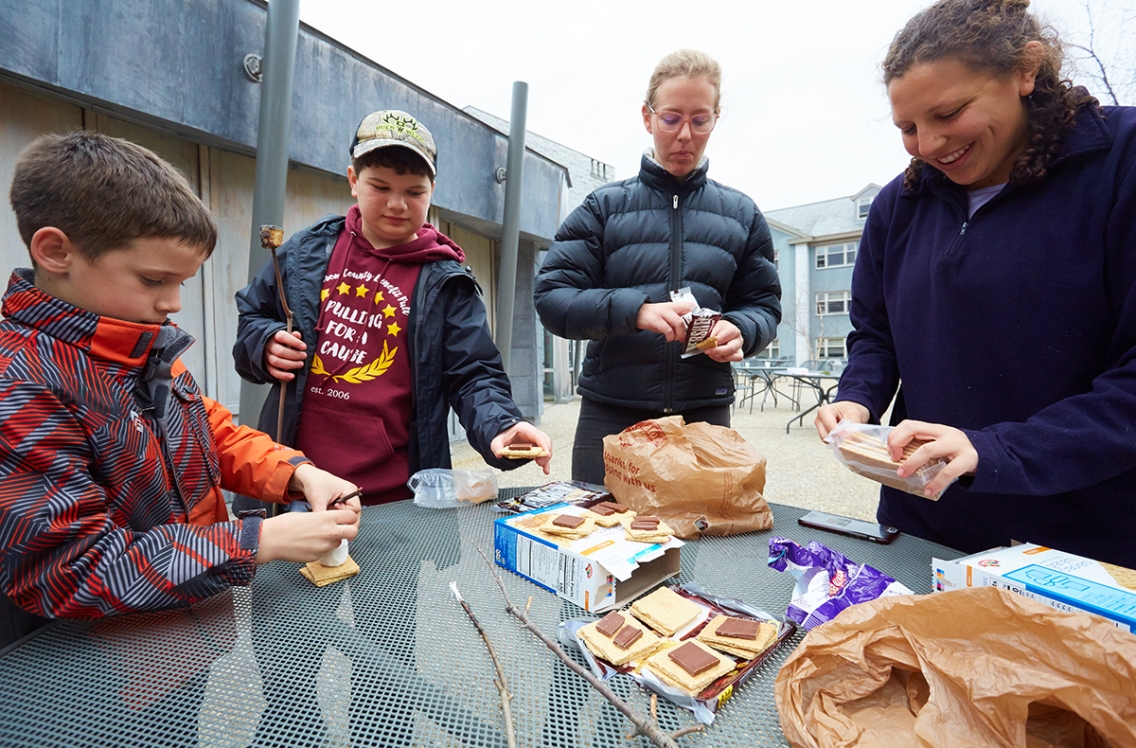
College students Jenny Pushner ’21.5 (right) and Viv Merrill ’22.5 help kids from the Middlebury community make s’mores after a morning of orienteering and building outdoor shelters in the Atwater woods.
As a new group, WildMidd also grappled with how to best organize itself. While the first meeting drew around 20 students, attendance at subsequent meetings hovered at five to eight. Then, as members reached out more deliberately—talking to everyone from the Ultimate Frisbee team to a first-year seminar on environmentalism, holding an open house before spring semester, using social media—attendance grew. Sophomore Jenny Pushner recalled that in early meetings, she was often the only female. “So I started my own little campaign” to build the club into a more inclusive space. Initially, several members observed, meetings were fun … but not particularly effective.
Facing these challenges, the organization made itself stronger. This spring, meetings have been packed, with close to two dozen regularly in attendance. Women and men participate with equal voices, in equal numbers. Meetings have enough flow to feel lively yet enough structure to be incredibly productive. Different students speak out, take leadership, and report on recent or upcoming activities. Meetings use breakout groups to dive in and tackle upcoming projects.
Building on this foundation, spring activities have included
- Ongoing monitoring of a vernal pool on Snake Mountain as part of VCE’s statewide monitoring project
- Multiple trips to protect amphibians crossing roads on their spring migrations to mate in vernal pools
- Assisting at 350Vermont’s five-day climate walk
- Removing invasive buckthorn at New York’s Chimney Point State Park
- Attending conferences
- Talking about Islam and permaculture with the Muslim Student Association
- Planning for a nature playzone to be built next year
- Planning for the upcoming communitywide “bioblitz” in Otter View Park, to be held this Saturday, April 27
WildMidd is also working with ALPINE (Academics for Land Protection in New England) to create a wider network of similar clubs and to collaborate on conservation activities.
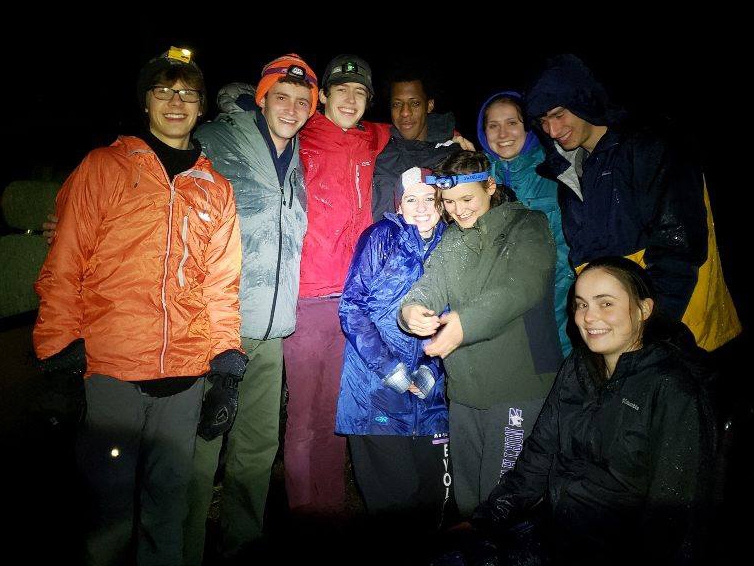
Members of WildMidd made multiple trips to protect amphibians making spring migrations across roads to mate in vernal pools.
With this breadth of offerings, club members can choose where to focus their energies: building community by working with other groups, both on and off campus; spending more time in nature; doing hands-on restoration and citizen science; connecting kids with nature.
For sophomore Arielle Landau, one of the year’s WildMidd highlights was carrying migrating amphibians across the road to keep down the squish factor while also tallying their numbers, a task that combines stewardship with citizen science.
“Helping the salamanders cross the road was amazing,” said Landau. “Everyone was smiling and laughing and it was cold and raining and almost snowing—normally not weather to be happy about, but you’d be like ‘It’s going to rain tonight. We can go help the salamanders!’”
For political science major Sophie Clark ’21, WildMidd provides a powerful vehicle for environmental advocacy.
“I came to Middlebury to meet people who are really passionate about what they’re involved in, people who want to make a physical, fundamental change in the world,” said Clark. “And I feel like what we’re forming with this club is exactly that.”
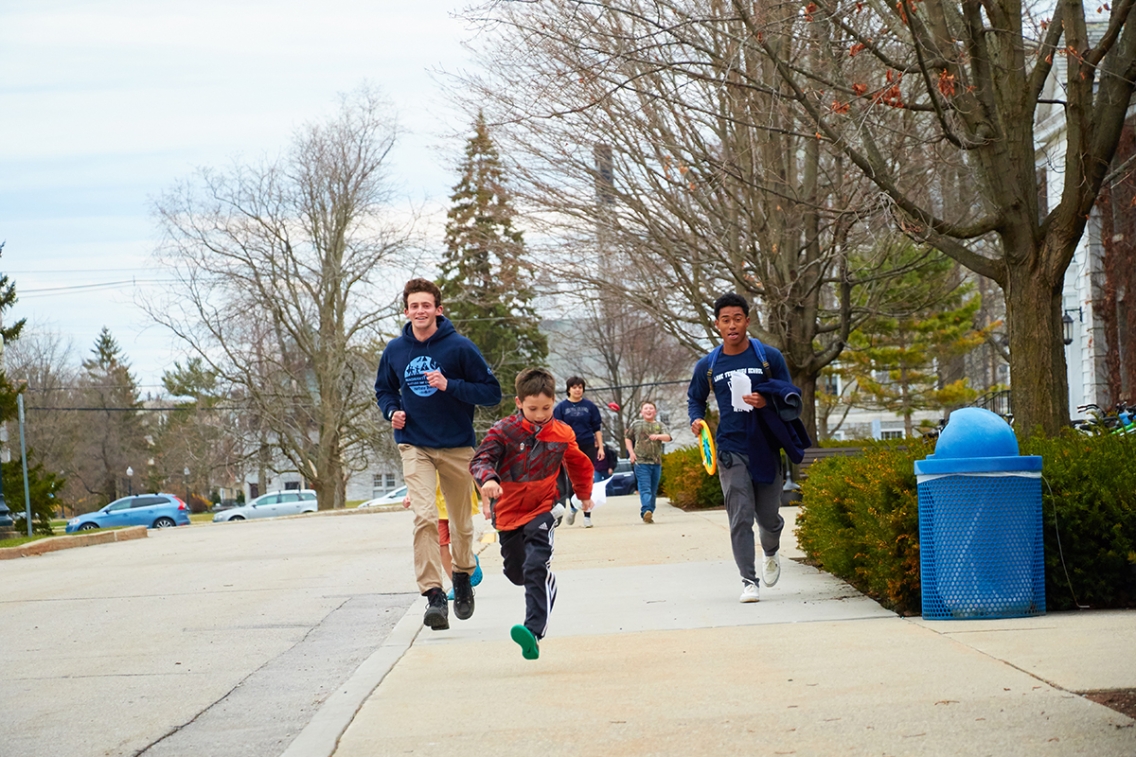
Middlebury students Jacob Freedman ’21 (left) and Sabian Edouard ‘21 follow the lead of a young participant in an orienteering activity on campus. The College students worked—and played—with area kids on a number of outdoor skills.
A big part of WildMidd is outreach to kids and teens. In January, members worked with Hannaford Career Center students on natural resources presentations and hosted them on campus. Later in the spring, they visited HCC’s sugar shack. They brainstormed with different school groups about the proposed nature playzone, asking kids to imagine a perfect play space for a favorite animal, and led winter survival workshops at the Mary Johnson afterschool program and on campus with Community Friends.
That event found kids and College students in the woods behind Atwater, dragging downed limbs and branches and building forts together; finding marshmallows, chocolate, and graham crackers with a “treasure map” and compass; learning fire building with a classic stick teepee; chowing down on s’mores.
Partnering with Bridge School has been especially important. A “winter survival” workshop in January turned into more of a snowball fight, said Pushner, who’s a lead organizer on Bridge School activities. Students went cross-country skiing together at Rikert Nordic Center, and in mid-April, WildMidd took Bridge School students to the vernal pool on Snake Mountain.
“A couple days before, one student was like, ‘Ugh, we’re going for a hike. Well at least I’ll have my friends with me,’” recalled Bridge School teacher Jen Grilly.
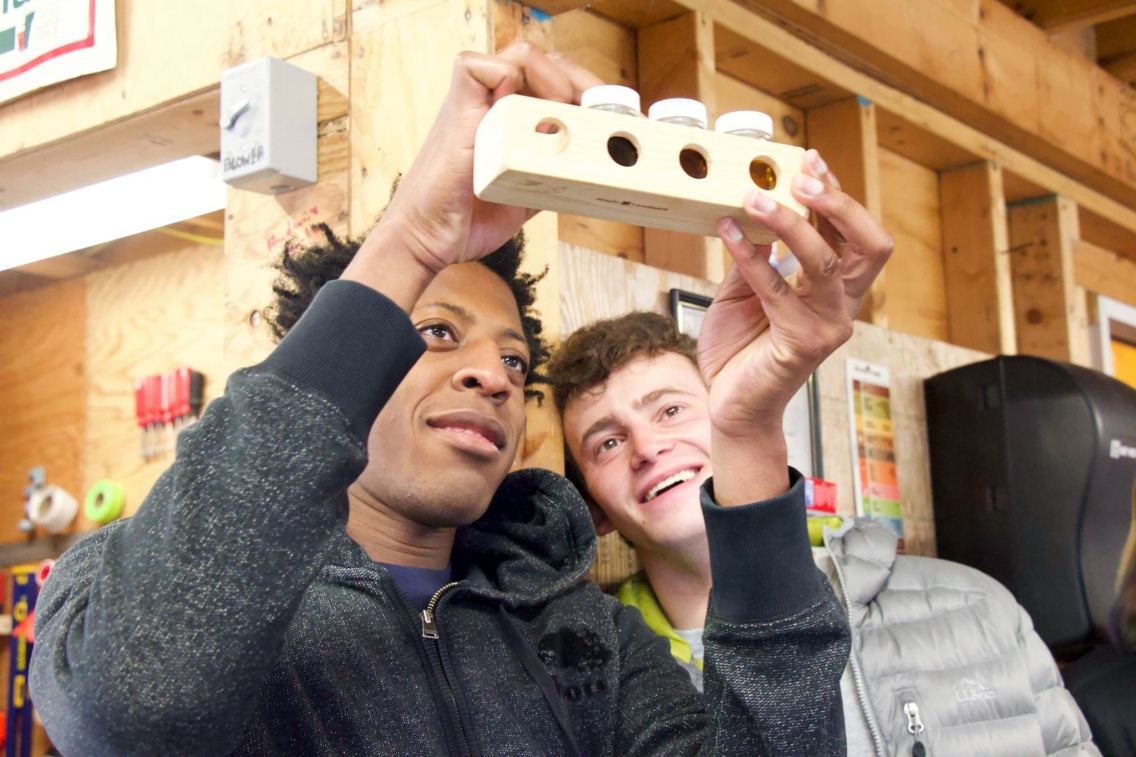
Kufre Udoh ’21 and Jacob Freedman ’21 look at the color grading of maple syrup at the Hannaford Career Center sugar shack during a trip in April.
Once at the pool, WildMidd and Bridge students paired up and started looking for different kinds of amphibian eggs, as assigned. “But they weren’t overly excited about it.”
Finally, someone found the first egg mass.
“Students gathered around and they started looking at it,” said Grilly. “Then all of a sudden, we could see a newt swimming and a wood frog swimming… . Suddenly, it exploded for them, and they saw everything. They got so excited. So it went from this, ‘Okay, we’re out in the middle of the woods,’ to ‘Oh my gosh, there’s so much going on here; look at all of the things we can find!’”
One of the things she most appreciates, said Grilly, is the way WildMidd has built relationships with her young students.
“Having this opportunity to connect with folks they wouldn’t necessarily see on a regular basis, going with them to another place, having fun with them but also learning from them, is such a special thing for me as a teacher, because that’s what impacted me as a student. That’s what changed my career path.”
Faculty advisor Marc Lapin says WildMidd uniquely addresses an important need on campus and in all communities.
“We have to influence and make change in the communities we live in. That’s what this club is about. This is the way humans have interacted with and shaped their world, their culture, their relationship with human and nonhuman nature forever. I think it’s very empowering.”
—Gaen Murphree; Photos by Todd Balfour and WildMidd

